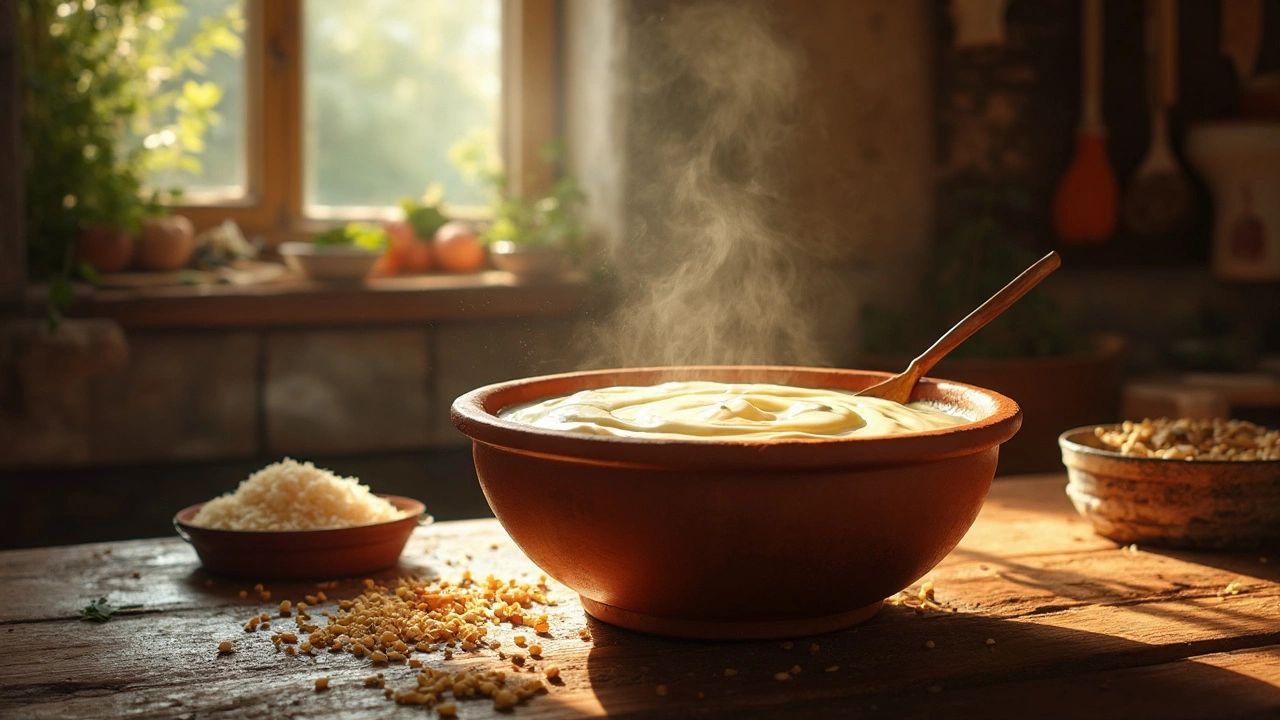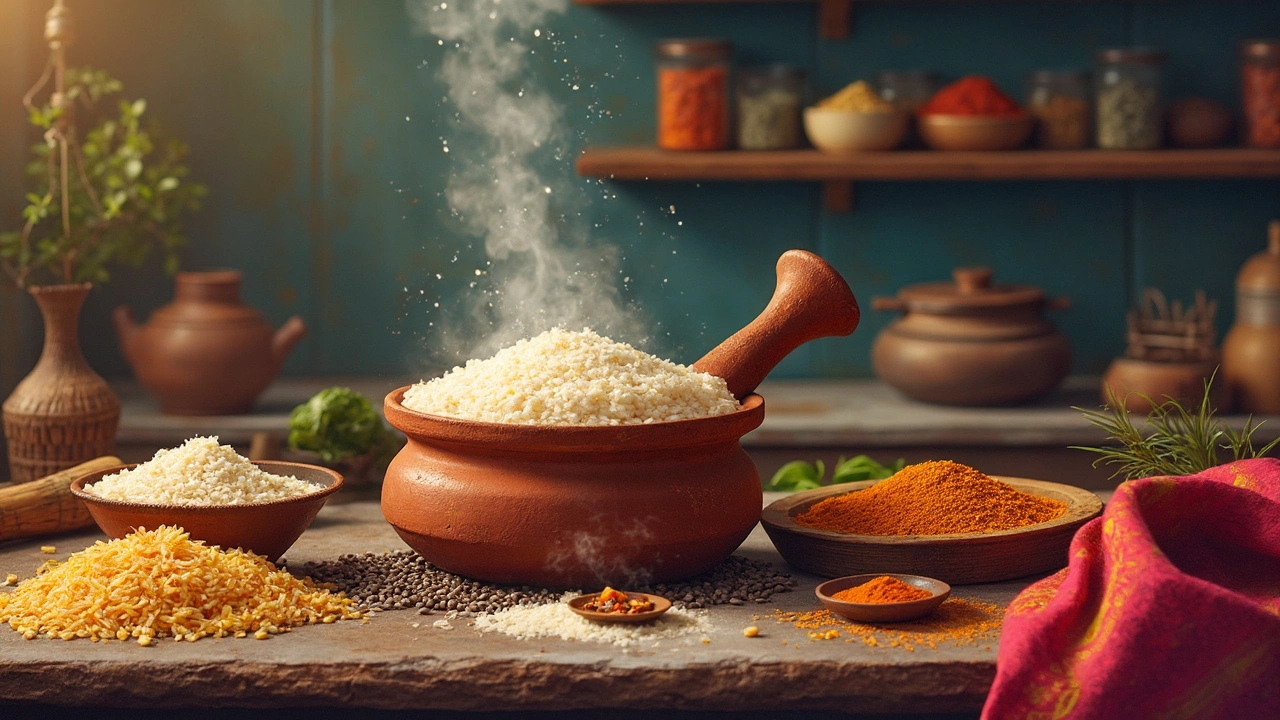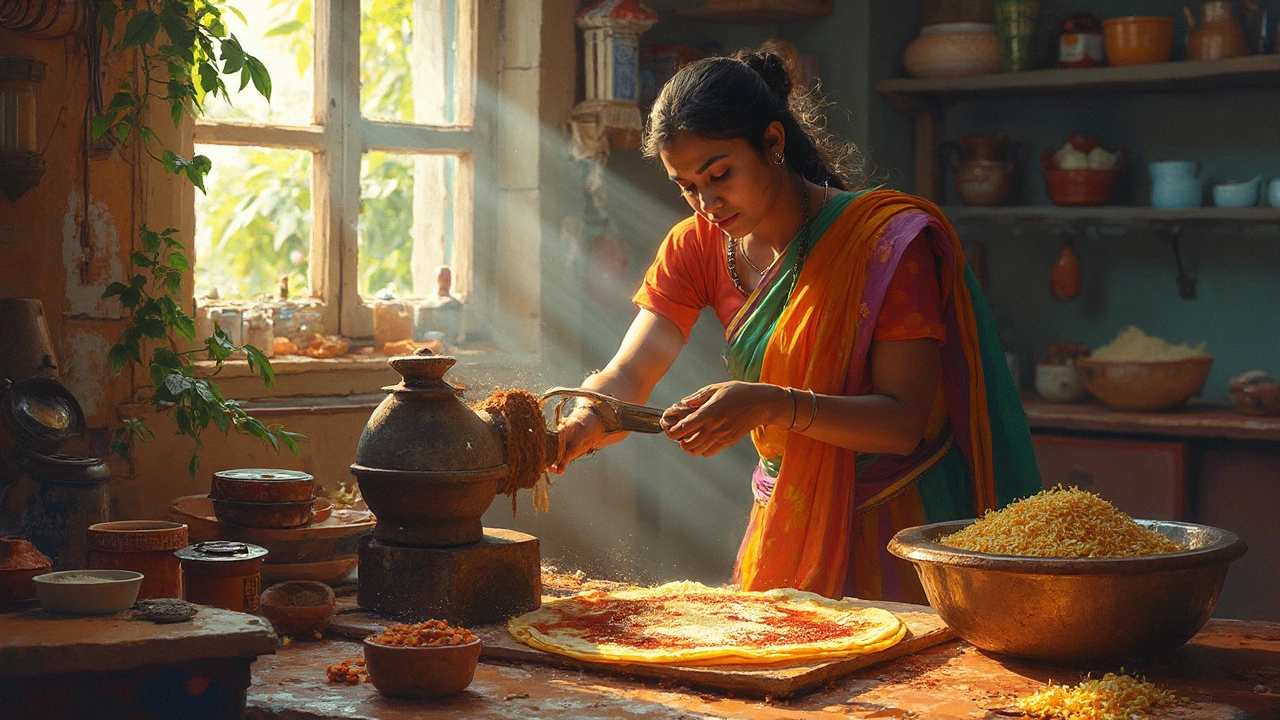Yeast-Free Cooking: Tips, Techniques, and Indian Recipes
When you hear yeast-free, a style of cooking that skips commercial or wild yeast for leavening. Also called yeast‑less, it relies on other agents or methods to get light, airy results.
One of the most common helpers is baking soda, an alkaline leavening powder that reacts with acid to produce carbon dioxide. You’ll see it pop up in roti tricks, quick dosas, and even some sweet treats. Another key player is fermentation, a natural process where microbes break down starches and release gases. While traditional sourdough leans on yeast, you can speed it up with a dab of yogurt or a splash of lemon juice and still stay yeast‑free. Finally, Indian flatbread, things like roti, chapati, and paratha that often rely on steam and hot pan for puffing, shows how texture can be achieved without any leavening at all.
Putting these pieces together creates a neat web of relationships: yeast-free cooking encompasses baking soda leavening, requires proper fermentation, and often uses the technique of hot‑pan puffing for flatbreads. Baking soda influences the crumb of roti, while fermentation adds flavor depth to dosa batter. The result is a kitchen where you can craft fluffy chapatis, tangy dosas, and light cakes without reaching for a packet of yeast.
Why Go Yeast‑Free in an Indian Kitchen?
Many home cooks avoid yeast simply because it adds a step or needs extra care. In India, where time and pantry space are precious, a quick‑rise batter or a soda‑boosted dough means dinner is ready faster. Plus, those with yeast sensitivities get a safe alternative that still delivers the airy bite they love. The flavor profile shifts, too – you’ll notice brighter, tangier notes from yogurt‑based fermentation and a subtle crisp from soda‑activated dough.
Let’s break down the most talked‑about topics you’ll find in the posts below. First, the science of adding baking soda to roti dough: a pinch changes the gluten network, giving you softer, puffier rotis that stay fluffy longer. Second, the art of speeding up fermentation for dosa batter – a few minutes in warm water with a splash of lemon can replace an overnight soak. Third, the tricks for making Indian flatbread without any leavening at all – roll thin, cook hot, and watch the steam lift the surface.
Beyond these basics, the collection dives into practical angles: why lemon brightens biryani, how to keep chutney fresh, and even the impact of adding baking soda to other breads. Each article offers step‑by‑step guidance that you can copy straight into your kitchen, whether you’re a beginner or a seasoned cook looking to shave minutes off a recipe.
Now that you know the core ideas, skim through the articles to discover quick fixes for flatbreads, smart swaps for leavening, and the science behind common Indian cooking myths. You’ll walk away with a toolbox of yeast‑free techniques that make everyday meals lighter, faster, and just as tasty.

Fast and Flavorful: Dosa Batter Fermentation Tricks Without Yeast
Making dosa batter without yeast is a traditional art that assures both quick fermentation and rich flavor. This article breaks down yeast-free methods using readily available ingredients like fenugreek seeds and poha. Discover how warm climates and simple room-temperature tricks can transform your batter. Read on to learn how to speed up the fermentation process and enjoy crispy dosas.

Boost Dosa Batter Fermentation Naturally Without Yeast
Fermenting dosa batter naturally can be a bit tricky, but with some practical tips, you can get fluffy dosas without using yeast. Understand how to harness the right temperature, use age-old fermenting vessels, and even leverage natural ingredients. Discover effective ways to prepare batter that stays fresh and yields perfect results every time. Transform your kitchen into a fermentation haven with these simple and natural tips.

Quick Dosa Batter Fermentation Hacks Without Yeast You Must Know
Fermenting dosa batter without yeast can be a bit tricky since yeast plays a significant role in the rising process. However, several hacks can simplify the fermentation process, making it quicker and more reliable. Utilizing natural ingredients you might already have at home can save time and improve results. By understanding how temperature and environment play a role, you can ensure your dosa batter ferments perfectly every time. Discover these simple yet effective tricks to get your dosa batter ready without relying on yeast.

Fastest Way to Ferment Dosa Batter Without Yeast
Unlock the secret to fermenting dosa batter quickly without adding yeast. This article explores traditional techniques and modern innovations to speed up the process. Discover why temperature, ingredient quality, and storage methods significantly impact fermentation. Whether you're a seasoned cook or a kitchen newbie, these practical tips can help you master dosa batter fermentation. No need for yeast or complicated gadgets—just a few simple tweaks can transform your cooking game.

Quick Methods to Get the Perfect Dosa Batter Without Yeast
Making dosa batter doesn't have to be complicated, and you certainly don't need yeast to get those crispy, delicious dosas. This article breaks down simple steps and tips for crafting the perfect batter using ingredients you probably already have in your kitchen. Discover what really makes a dosa crispy and golden by getting the fermentation process just right, minus any yeast. Plus, learn some tricks from experienced cooks on how to fine-tune your batter to suit your taste.